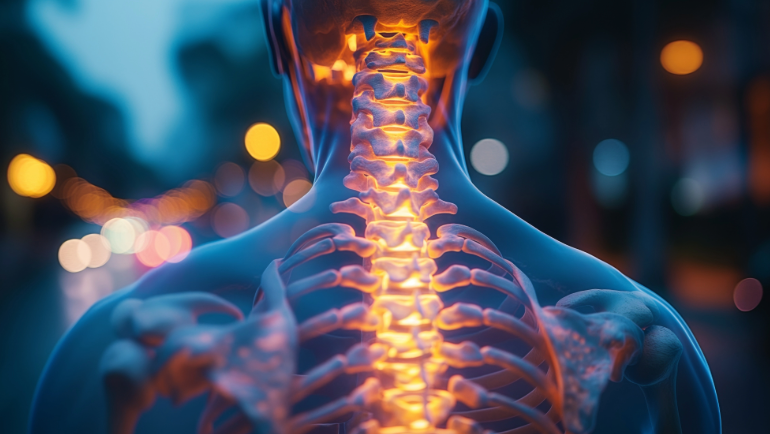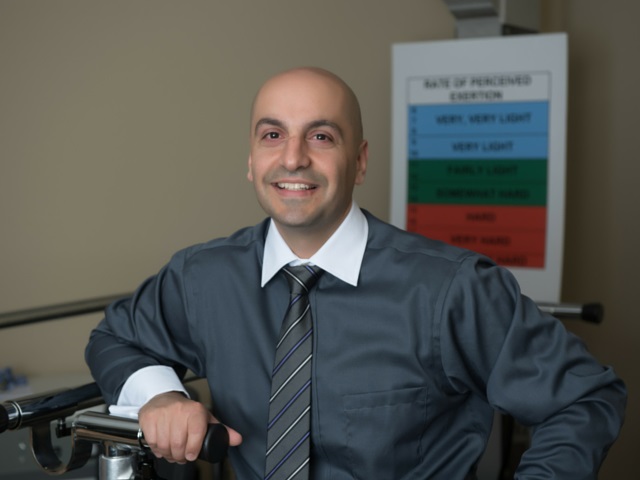Hope through innovation: Detroit scientists reimagine treatment for spinal cord injury recovery

DETROIT — The 24 hours following a traumatic spinal cord injury are the most critical to the long-term quality of life for patients, including those with incomplete spinal cord injuries – injuries where the spinal cord can send some messages to or from the brain and patients have some feeling and muscle control below the injury site.
According to a research team at Wayne State University, a critical challenge in addressing incomplete spinal cord injury is to devise an effective intervention during the initial 24 hours following injury that will positively impact long‑term functional mobility. Drug therapies have shown to be ineffective because they must be delivered through the bloodstream — causing a significant delay for building up efficient concentrations at the target site — and must cross several membrane systems (i.e., blood‑spinal cord barrier). This delay affects the prospects of saving and regenerating neurons at the injury site.
To help address this situation, a collaborative research team from Wayne State received a five-year, nearly $2.8 million grant from the National Institute of Neurological Disorders and Stroke of the National Institutes of Health for the study, “Non-invasive infrared light therapy and medical device to treat spinal cord injury.” The co-principal investigators on the grant include Moh Malek, Ph.D., professor of physical therapy in the Eugene Applebaum College of Pharmacy and Health Sciences, and Maik Hüttemann, Ph.D., professor of molecular medicine and genetics in the School of Medicine and the Division of Research & Innovation.

“Mitochondria are often referred to as the ‘powerhouses of the cell’ because that is where more than 90% of the cell’s energy is generated,” said Hüttemann. “Thus, disruptions to the mitochondria can negatively influence energy production, which causes the cells to function improperly. Such is the case with traumatic spinal cord injury where the mitochondria initially become hyperactive and, therefore, produce large amounts of damaging reactive oxygen species or ‘free radicals,’ leading to a cascade of events that trigger the death of nerve cells.”
Hüttemann pioneered the development of an infrared light device, which has received multiple patents and forged a start-up called Mitovation. The uniqueness of the wavelengths that Hüttemann discovered is that they reduce mitochondria activity, whereas most commercially available infrared light systems increase mitochondria activity.

“The idea of starting this research came from watching the National Institutes of Health conference SCI 2020: Launching a Decade for Disruption in Spinal Cord Injury Research, which, in part, focused on a critical need to develop new and innovative treatment strategies for the initial 24 hours following injury to the spinal cord,” said Malek. “Occasionally, a fresh perspective from people outside the research area is needed to examine a problem and develop a potential solution. While neither Maik nor I are spinal cord injury researchers, we have a 14-year history of collaboration related to mitochondria function. Thus, using the infrared light technology presented a unique opportunity to potentially treat incomplete spinal cord injury in the initial 24 hours following the trauma.”
The project will use the patented innovative, non-invasive infrared light technology to target the mitochondria in the injured spinal cord. The goal is to decrease the reactive oxygen production, which is detrimental to neuronal cell regeneration.
“This research project is an excellent example of taking a university-created technology and applying it to a different need in hopes of creating therapies not once thought of,” said Ezemenari M. Obasi, Ph.D., vice president for research & innovation at Wayne State University. “Drs. Malek and Hüttemann have thought of a creative new approach that may one day give us answers to key gaps in spinal cord research that ultimately could help many.”
Using a team science approach, Malek and Hüttemann, along with their co-investigators and consultants Drs. Dennis Goebel (WSU School of Medicine), Dragana Komnenov (WSU School of Medicine), Wassim Tarraf (WSU Eugene Applebaum College of Pharmacy and Health Sciences), Gerry Hish (University of Michigan-Ann Arbor), Thomas Sanderson (University of Michigan-Ann Arbor), Linda J. Noble‑Haeusslein (University of Texas, Austin), and Victor Chang (Henry Ford Health), will perform a series of longitudinal experiments and ultimately develop a human prototype of their infrared light delivery system as part of this grant.
“At the end of five years, we will be ready to propose a Phase I clinical trial study that can determine critical next steps for this potential treatment,” said Malek and Hüttemann.
This grant number for this National Institute of Neurological Disorders and Stroke of the National Institutes of Health research study is NS134695.
# # #
About Wayne State University
Wayne State University is one of the nation’s pre-eminent public research universities in an urban setting. Through its multidisciplinary approach to research and education, and its ongoing collaboration with government, industry and other institutions, the university seeks to enhance economic growth and improve the quality of life in the city of Detroit, state of Michigan and throughout the world. For more information about research at Wayne State University, visit research.wayne.edu.
Wayne State University’s research efforts are dedicated to a prosperity agenda that betters the lives of our students, supports our faculty in pushing the boundaries of knowledge and innovation further, and strengthens the bonds that interconnect Wayne State and our community. To learn more about Wayne State University’s prosperity agenda, visit president.wayne.edu/prosperity-agenda.
Contact info
Julie O'Connor
Director, Research Communications
Phone: 313-577-8845
Email: julie.oconnor@wayne.edu